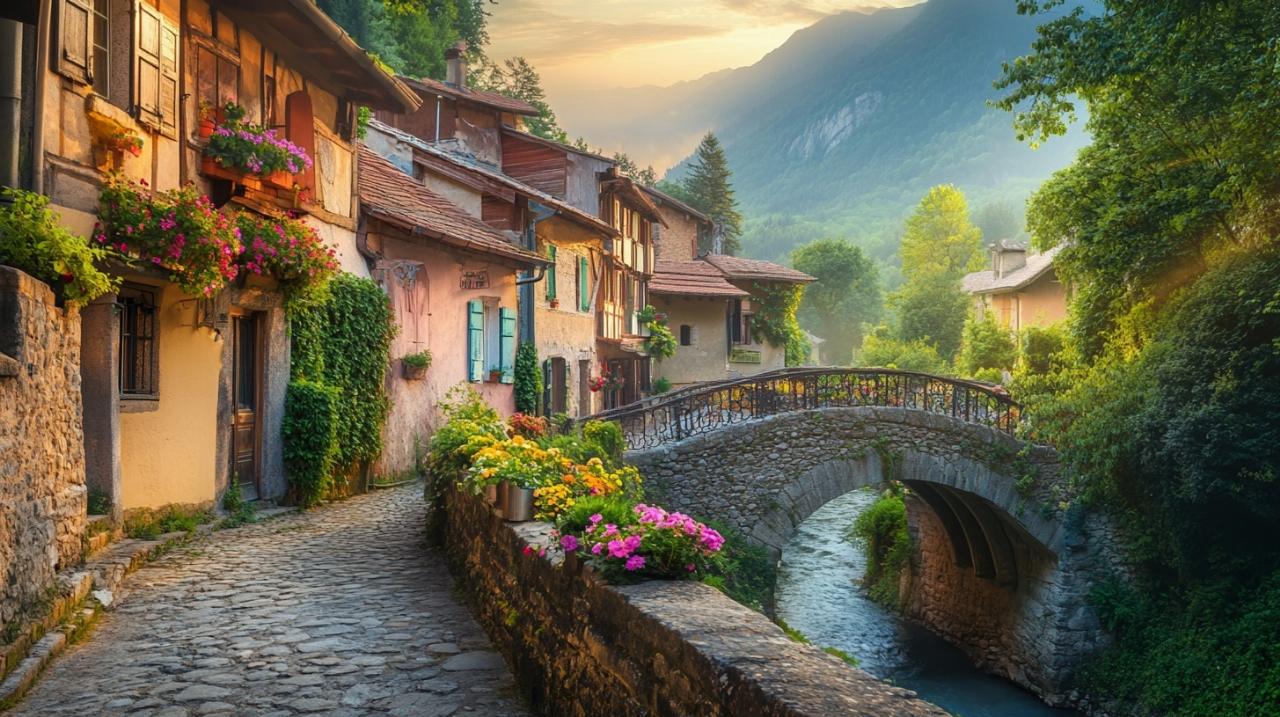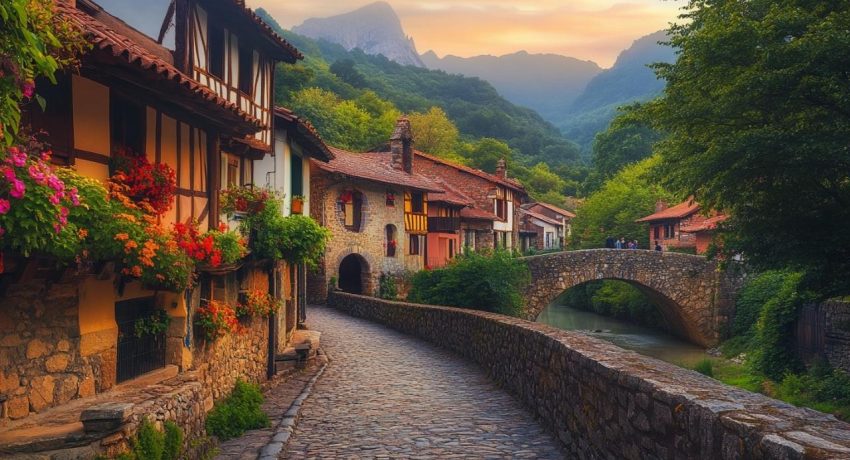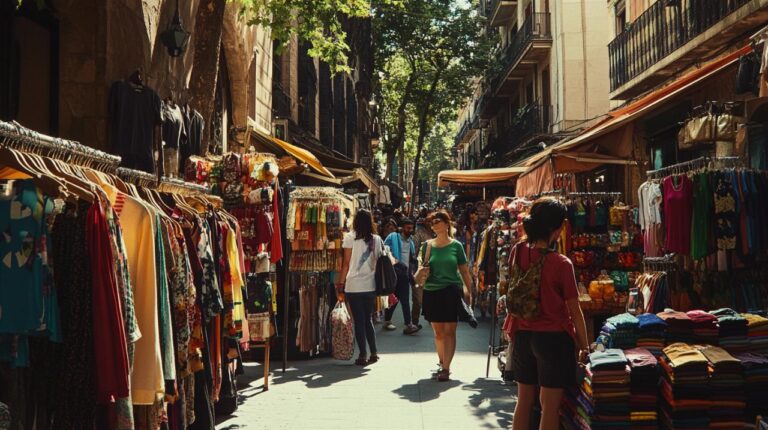Europe is a treasure trove of extraordinary destinations waiting to be discovered beyond the well-trodden tourist paths. While millions flock to the Eiffel Tower, Colosseum, and other iconic landmarks each year, true travel enthusiasts know that the continent's most authentic experiences often lie hidden in plain sight. This guide takes you beyond the tourist hotspots to discover Europe's best-kept secrets – places where you can immerse yourself in genuine local culture, breathtaking landscapes, and unforgettable experiences without the crowds.
Undiscovered coastal escapes
The European coastline stretches for thousands of kilometres, offering countless secluded spots for those willing to venture beyond the popular beach resorts. As Jacksons Travels often highlights in their comprehensive European guides, these lesser-visited coastal areas provide not just tranquillity but often a more authentic experience of local life and traditions.
Secluded mediterranean coves
The Albanian Coast represents one of the Mediterranean's last truly undiscovered shorelines. With its crystal-clear waters, mountain backdrops, and charming coastal towns, Albania offers the Mediterranean experience without the crowds or prices of its more famous neighbours. Similarly, Calabria in southern Italy features stunning coastlines alongside mountains and national parks, yet receives far fewer tourists than other Italian coastal regions. The region's combination of seaside charm and rustic mountain villages makes it an ideal destination for travellers seeking authentic Italian experiences.
Baltic seaside retreats
Northern Europe's Baltic coastline offers a different but equally captivating coastal experience. Estonia, with just over 6.6 million tourist nights recorded in 2024, remains one of Europe's least-visited coastal nations despite its gorgeous shoreline dotted with charming fishing villages and medieval towns. Latvia follows closely as the fourth least-travelled destination in Europe, with its long sandy beaches and coastal nature reserves providing peaceful retreats even in peak summer months. These Baltic gems offer a refreshing alternative to the Mediterranean, with their unique blend of coastal beauty, dense forests, and distinctive cultural heritage.
Charming rural villages
Beyond the bustling European capitals lie thousands of picturesque villages where time seems to stand still, preserving centuries-old traditions and architectural styles.
Picturesque countryside hamlets
Monsanto in Portugal stands out as one of Europe's most unusual villages, where houses have been ingeniously built around and under massive granite boulders. This living museum of rural Portuguese life offers visitors a glimpse into a lifestyle that has remained largely unchanged for centuries. In Poland, the Kaszuby region with its nearly 700 lakes and nature reserves presents a pastoral landscape dotted with traditional wooden houses and windmills. This culturally distinct region maintains its own language and traditions, making it a fascinating cultural enclave within easy reach of Gdańsk airport.
Mountain settlement treasures
Tucked away in Europe's numerous mountain ranges are villages that have developed their own distinct characters over centuries of relative isolation. Castelmezzano in the southern Italian mountains is a prime example, with its houses seemingly carved into the mountainside, creating one of the most dramatic village settings in Europe. For winter sports enthusiasts seeking alternatives to the crowded Alpine resorts, Bad Gastein in Austria offers thermal spas and skiing opportunities in a beautiful Belle Époque setting. Just a 90-minute train ride from Salzburg, this mountain retreat combines outdoor adventure with historical charm.
Offbeat urban destinations
While Paris, Rome, and Barcelona dominate city break itineraries, Europe's lesser-known cities often provide equally rich cultural experiences without the overwhelming tourist numbers.
Lesser-known city breaks
Belgrade, Serbia stands as a fascinating destination with what travellers describe as a split personality, thanks to its position at the confluence of the Sava and Danube rivers and its complex history. As the capital of one of Europe's less-visited countries, with Serbia recording just over 12.6 million tourist nights in 2024, Belgrade offers visitors authentic experiences, vibrant nightlife, and fascinating architectural contrasts. Similarly, The Hague in the Netherlands provides a sophisticated alternative to Amsterdam, with its political significance, excellent museums, and nearby beaches creating a varied urban experience that many visitors overlook in favour of the capital.
Historic towns off the tourist trail
Berat in Albania is often described as the country's most beautiful town, with its Ottoman houses climbing up the hillside towards a magnificent castle. This UNESCO World Heritage site receives a fraction of the visitors that flock to similar historic towns in Italy or Greece. Erfurt in Germany's Thuringia region represents another hidden gem, with its wonderfully preserved medieval old town featuring a unique merchant's bridge lined with half-timbered houses. These smaller historic centres offer the architectural beauty and cultural significance of their more famous counterparts but with space to breathe and explore at a leisurely pace.
Remarkable natural wonders
 Europe's landscape is dotted with natural marvels that remain relatively unknown to mass tourism, providing spectacular settings for adventurous travellers.
Europe's landscape is dotted with natural marvels that remain relatively unknown to mass tourism, providing spectacular settings for adventurous travellers.
Hidden lakes and forests
The Lake of the Four Cantons in Switzerland represents one of the continent's most dramatic lacustrine landscapes, surrounded by mountains and steeped in Swiss history as the birthplace of the confederation. Despite its beauty, it remains less visited than the more famous Swiss lakes. In Latvia and Estonia, vast forested areas cover much of the countryside, harbouring wildlife that has disappeared from much of Western Europe. These Baltic forests, with their bogs, lakes, and diverse ecosystems, offer wilderness experiences that feel increasingly rare in densely populated Europe.
Spectacular Viewpoints Missed by the Masses
While Ben Nevis in Scotland attracts around 125,000 hikers annually, many equally impressive viewpoints across Europe see just a fraction of this number. The Wild Atlantic Way in Ireland, stretching 2,500 kilometres from Kinsale to the Inishowen Peninsula, features countless dramatic coastal viewpoints where visitors can often find themselves completely alone with the Atlantic panorama. Similarly, the Georgian Caucasus Mountains offer some of Europe's most spectacular high-altitude landscapes and viewpoints, yet remain largely undiscovered by Western tourists despite excellent hiking in summer and skiing in winter.
Cultural experiences beyond the brochure
Some of Europe's most memorable cultural experiences take place away from the major museums and galleries, in communities where traditions remain living practices rather than tourist performances.
Local festivals worth travelling for
The Ore Mountains region along the German-Czech border transforms during the Christmas season into a wonderland of traditional markets and decorations, with local woodcarving traditions on full display. This authentic celebration of Christmas traditions attracts primarily domestic rather than international tourists. Throughout Eastern Europe, seasonal festivals marking harvests, solstices, and religious observances offer windows into cultural practices that pre-date modern tourism by centuries, providing visitors with authentic cultural immersion rather than staged events.
Artisanal food and drink adventures
The Vipava Valley in Slovenia has emerged as one of Europe's most exciting wine regions, with its distinctive wines and cycling routes through vineyards providing a perfect slow travel experience. The valley's commitment to sustainable tourism and organic production aligns perfectly with contemporary travel values. Similarly, Graz in Austria has developed a reputation for culinary excellence and sustainability, with its farmers' markets and food festivals showcasing the best of Austrian cuisine away from the more visited cities of Vienna and Salzburg.
Practical tips for venturing off-track
Exploring Europe's hidden corners requires a slightly different approach to planning and packing than visits to major tourist destinations.
Getting around like a local
Public transport networks in Europe extend well beyond the major cities, with regional trains and buses often providing the best access to rural areas and smaller towns. In many Eastern European countries, these services are particularly good value, though timetables may be less frequent than in Western Europe. For coastal exploration, local ferry services can provide both transportation and sightseeing, particularly in places like the Greek islands or along the Croatian coast. The journey to Ithaca, the legendary home of Odysseus, involves a flight to Kefalonia followed by a short ferry ride, adding to the sense of discovery.
Packing Essentials for the Intrepid Explorer
When visiting less-touristed areas, it becomes important to pack with versatility in mind. A good pair of walking shoes is essential even for urban exploration, as many smaller historic towns feature cobbled streets and steep inclines. Language resources become more valuable when venturing into regions where English is less commonly spoken, with a translation app or phrasebook proving invaluable for authentic interactions. Finally, allowing flexibility in your itinerary becomes particularly important when exploring off the beaten path, as discovering an unexpected local festival or following a recommendation from a local resident often leads to the most memorable experiences of all.








